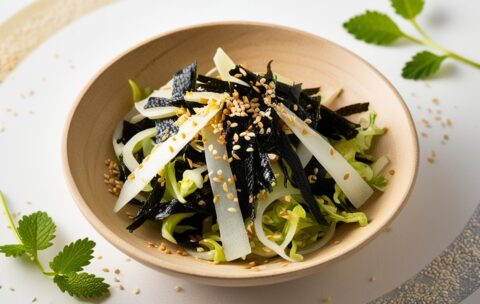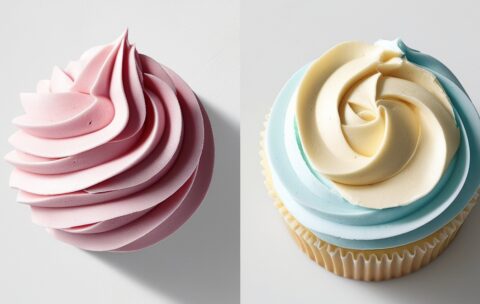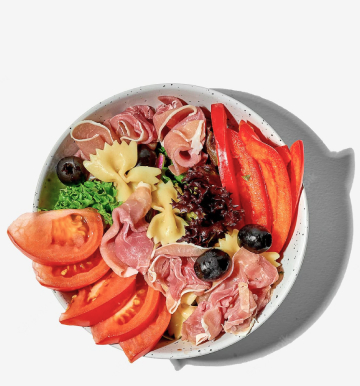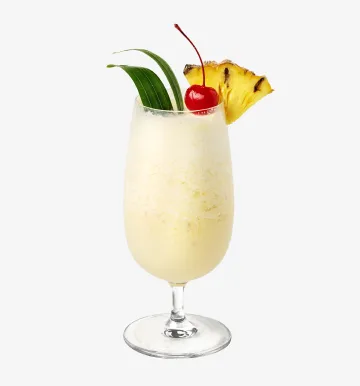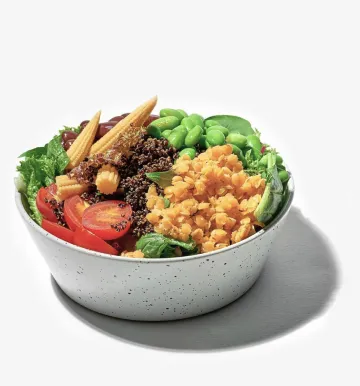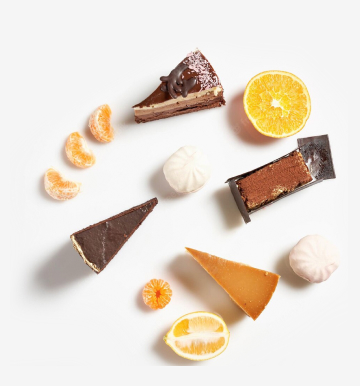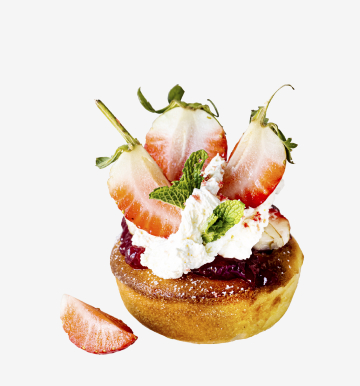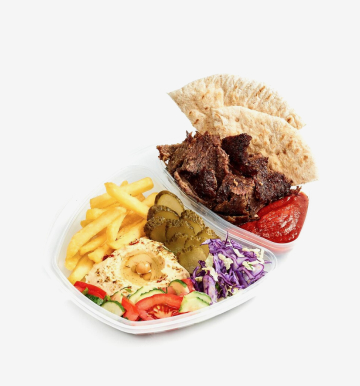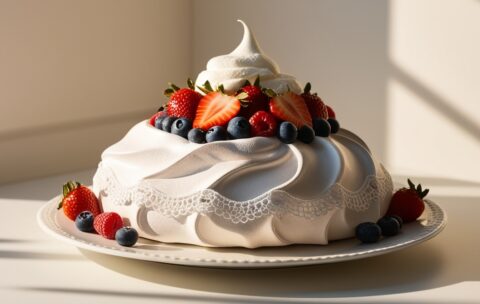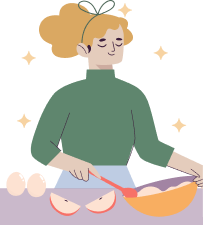Home Update 02
October 4, 2023 2025-06-05 13:04Home Update 02
Become a Home Chef
Learn to cook from scratch and master restaurant-quality meals in your own kitchen. Perfect for beginners and food lovers.

Our Top Courses
We've selected the best programs to get you started. Each course offers step-by-step lessons, hands-on recipes, and guaranteed results — even for beginners.
New York Cheesecake
2 Lessons
2.3 hours
Intermediate
What you'll learn
Ingredient Selection & Ratios: Identify the best types of cream cheese, sour cream, and eggs; calculate the ideal proportion for a dense, creamy texture without greasiness.
Crust Preparation: How to toast and bind graham-cracker crumbs using melted butter and a hint of sugar; press evenly to create a sturdy, flavorful base.
Mixing Techniques: Beat cream cheese to a smooth consistency, incorporate sugar gradually, and fold in eggs and dairy to prevent overmixing and air incorporation that cause cracks.
Water-Bath Baking: Set up a proper bain-marie—wrapping the springform pan, positioning in the oven, and monitoring water level—to ensure even heat and prevent browning or cracking.
Cooling & Setting: Techniques for gradual temperature reduction—oven-off resting, room-temperature cooldown, then refrigeration—to minimize shrinkage and produce a flawless top.
Flavor Variations & Toppings: Simple ways to add lemon zest or vanilla bean for subtle notes; recipes for fruit compotes (strawberry, blueberry) and ganache for elegant finishes.
Troubleshooting Common Issues: Solutions for cracked tops, soggy crusts, and overly dense fillings; learn how small temperature shifts or mixing errors impact final results.
Japanese Seaweed & Sesame Slaw
8 Lessons
3 hours
Intermediate
What you'll learn
How to properly rehydrate and rinse dried wakame and hijiki seaweeds
Knife skills for shredding cabbage and slicing scallions
Technique for toasting sesame seeds to maximize aroma
Balancing savory, sweet, tangy, and nutty flavors in a Japanese-style dressing
Tips for keeping the slaw crisp without sogginess
Variations for added protein (tofu, shrimp) or heat (chili oil)
Grilled Salmon with Lemon Butter
4 Lessons
1.8 hour
Intermediate
What you'll learn
Outcome Description
Selecting Quality Salmon Identify sustainable salmon cuts (filets vs. steaks), check for freshness, and understand label terms (wild-caught vs. farmed).
Marinade & Seasoning Techniques Prepare a simple herb-citrus marinade that enhances flavor without overpowering the fish.
Grilling to Perfection Control grill temperature, manage flare-ups, and achieve crisp skin while maintaining a juicy interior.
Preparing Lemon Garlic Butter Combine melted butter, fresh lemon juice, garlic, and herbs to create a bright finishing sauce.
Doneness & Presentation Use visual cues and a thermometer to judge when salmon is cooked through (125–130°F / 52–54°C), and plate with complementary garnishes.
Lamb Rogan Jos
3 Lessons
2.2 hours
Intermediate
What you'll learn
Outcome Description
Spice Selection & Preparation Identify and roast whole spices (cinnamon, cardamom, cloves) to form the foundation of the masala.
Yogurt Marinade Techniques Use yogurt and acid (lime or lemon) to tenderize lamb while preserving a creamy texture.
Building the Masala Layer ground spices (Kashmiri chili powder, coriander, cumin) for a balanced, vibrant curry base.
Browning & Layering Flavors Sear lamb to lock in juices, then deglaze with aromatics (onion, ginger, garlic) for depth.
Slow Simmering & Consistency Regulate heat and timing to allow lamb to become fork-tender without curdling the yogurt.
Finishing Touches Garnish with fresh cilantro, julienned ginger, and a drizzle of ghee for aroma and shine.
Golden Chocolate Fondant
5 Lessons
3.3 hours
Intermediate
What you'll learn
Ingredient Selection & Preparation
How to choose and combine premium dark chocolate, unsalted butter, and the unique ingredient (edible gold dust) to achieve both flavor depth and visual appeal.
Proper techniques for melting and tempering chocolate to ensure smooth consistency.
Batter Creation & Consistency Control
Step-by-step guidance on mixing flour, sugar, eggs, and cocoa to create a velvety batter that bakes into a crisp exterior while preserving a molten core.
Tips for testing batter viscosity to guarantee consistently gooey centers.
Molding & Baking Techniques
Methods for greasing and flouring individual ramekins or molds so the fondants release cleanly.
Precise oven temperature and timing strategies—accounting for oven variances—to achieve the signature “golden” crust with a flowing center.
Golden Finish Application
How to incorporate edible gold dust or gold leaf: when and how to apply it so it adheres beautifully without melting or smearing.
Alternative decoration ideas (e.g., gold-dusted raspberries, gold-tinted sauce) to complement the fondant’s appearance.
Plating & Serving
Techniques for plating fondants to maximize visual impact—pairing with complementary sauces (e.g., raspberry coulis, salted caramel) and garnishes.
Recommendations on optimal serving temperature and timing to preserve the molten center for guests.
Tabouleh
6 Lessons
2.3 hours
Intermediate
What you'll learn
How to select and properly prepare the key ingredients for authentic tabouleh.
Techniques for soaking and draining bulgur to achieve perfect texture.
Knife skills for finely chopping parsley, mint, tomatoes, and onions.
How to balance acidic, salty, and herbal flavors in the dressing.
Variations to adapt tabouleh for gluten-free and grain-free diets.
Presentation tips to serve tabouleh attractively as part of a mezze spread.
Chocolate Fondant
3 Lessons
1 hour
Intermediate
What you'll learn
Ingredient Selection & Preparation: How to choose high-quality chocolate, cocoa powder, and eggs; correctly measure and prepare ingredients for optimal texture.
Temperature Management: Techniques for melting chocolate and butter to avoid seizing or burning, including bain-marie and microwave methods.
Batter Consistency: How to achieve the right balance between a custard-like batter and a stable cake structure so that the exterior sets while the interior remains molten.
Molding & Baking: Proper greasing, flouring, or buttering of molds; timing and oven temperature adjustments to guarantee a uniform rise without overcooking.
Plating & Presentation: Tips for unmolding the fondant cleanly, garnishing ideas (e.g., dusted cocoa, fresh berries, ice cream pairing), and creating an elegant plating design.
Troubleshooting Common Issues: Solutions for common pitfalls—such as undercooked centers that are too runny, overbaked cakes with no molten core, or cracked exteriors.
Eggplant Parmesan
4 Lessons
59 minutes
Intermediate
What you'll learn
Below is an overview of the key skills and concepts you’ll master by the end of this lesson.
Outcome Description
Eggplant Selection & Prep Identify firm, glossy eggplants with minimal seeds; learn to salt and remove bitterness.
Breaded Coating Technique Achieve a crisp, golden crust using both breadcrumb and flour methods.
Tomato Sauce Creation Make a balanced marinara: tomato acidity, sautéed aromatics, and fresh basil notes.
Layering & Baking Stack components without sliding, ensuring even coverage and melt.
Cheese Choices & Melting Compare mozzarella versus provolone, and understand how Parmigiano-Reggiano adds depth.
Presentation & Garnish Plate the dish with fresh herbs, extra cheese shavings, and optional balsamic glaze.
Lobster Roll with Garlic Butter
4 Lessons
3.3 hours
Intermediate
What you'll learn
How to select, buy, and cook fresh lobster meat (from boiling/steaming to picking meat).
Techniques for making flavored garlic butter (infusing with garlic, herbs, lemon zest).
Proper seasoning and temperature control to keep lobster tender and juicy.
Best practices for toasting split-top hot dog buns or brioche rolls so they hold up and absorb butter.
How to assemble and garnish a Lobster Roll (balancing textures with finely chopped celery, chives, or parsley).
Buttercream Icing Techniques
5 Lessons
59 minutes
Intermediate
What you'll learn
Buttercream Foundations: Basic ratios for American, Swiss, Italian, and French buttercreams; key differences in texture, sweetness, and stability.
Temperature Control: How to handle ingredients (room-temperature vs. chilled butter, sugar syrup stages) to prevent graininess or separation.
Flavoring & Infusing: Incorporating extracts, fruit purées, ganache, or cocoa; balancing sweetness and fat without compromising consistency.
Coloring Strategies: Best practices for gel vs. powdered colors; preventing “bleeding” or streaking when blending multiple hues (e.g., ombré or watercolor effects).
Spreading & Smoothing: Techniques for achieving glass-smooth sides (bench scraper, icing turntable, hot spatula method) and avoiding common marks or air pockets.
Piping & Decorative Textures: Creating rosettes, ruffles, ruffles, basketweave, petals, and multi-tone piping (hidden two-tone tips, reversible bags).
Stabilizing for Warm Climates: Adjusting recipes (adding meringue powder or corn syrup) so buttercream holds shape in humid or warm environments.
Troubleshooting Common Issues: Fixing grainy buttercream, curdled mixtures, overly soft or too-stiff icing; rescue methods (re-creaming, adjusting sugar syrup).
Choose Your Category
Our courses are grouped by category to help you find what suits your taste. From quick dinners to gourmet desserts — start with what inspires you.



About Our Culinary Journey
We are passionate about bringing the joy of cooking to everyone. Our mission is to empower food lovers with the skills and confidence to create delicious meals at home. With expert chefs, innovative teaching methods, and a love for culinary arts, we’re here to inspire your kitchen adventures.
Our Commitment
Everyone can cook well. Our courses offer clear guidance to ensure success for all skill levels.
Community Focus
Join our foodie community. Share creations and grow in a supportive environment.
Why Choose Our Culinary Courses?
Our courses are designed to make cooking fun, accessible, and inspiring. Whether you're a beginner or a seasoned cook, our unique features will help you elevate your skills and unleash your culinary creativity.

Expert Instructors
Learn from world-class chefs with years of experience. Our instructors guide you step-by-step, sharing professional tips.
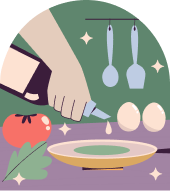
Flexible Learning
Study at your own pace, anytime, anywhere. Our online platform offers 24/7 access to lessons, so you can fit cooking into your busy schedule.

Hands-On Recipes
Practice with real recipes designed for all skill levels. From classic dishes to modern creations, you’ll master meals that impress every time.
What Our
Students Say
Hear from our happy students who have transformed their cooking skills with our courses. From beginners to seasoned cooks, our community loves sharing their success stories!
"This course completely changed how I cook! The instructors are so knowledgeable, and the lessons are easy to follow. I’m now confident making dishes I never thought I could."
Emma Johnson
"I love the flexibility of these courses. I can learn at my own pace and still feel supported. The recipes are amazing, and I’ve impressed my family with new dishes!"
Michael Chen
"The vegan cooking course was a game-changer for me. I learned so many creative ways to make plant-based meals that taste incredible. Highly recommend!"
Sophie Martinez
"The hands-on approach made learning so fun! I went from burning toast to baking artisan bread in weeks. Thank you for such an inspiring experience!"
James Carter
Discover Our Newest Culinary Courses
Get inspired by our latest additions! These exciting courses bring fresh ideas and techniques to your kitchen, perfect for food lovers eager to try something new. Browse our carousel to find your next culinary adventure.
Espresso Martini
7 Lessons
2.5 hours
Intermediate
What you'll learn
Historical Background: Trace the origins of the Espresso Martini and understand its cultural impact in the mid-1980s London bar scene.
Ingredient Selection: Identify the ideal vodka and coffee liqueur varieties, plus quality indicators for fresh espresso beans.
Espresso Extraction: Master key variables—pressure, temperature, and timing—to pull a shot optimized for a cocktail.
Mixology Techniques: Learn dry-shaking and ice-shaking methods to achieve a rich, stable crema and a perfectly chilled drink.
Straining & Presentation: Discover how to double-strain for a crystal-clear pour, layer foam properly, and place garnishes without collapsing the crema.
Serving & Pairing: Explore glassware choices, serving temperatures, and ideal food pairings for various occasions.
Pavlova
4 Lessons
3.3 hours
Intermediate
What you'll learn
Meringue Fundamentals (Paragraph + List):
You’ll understand how to whip egg whites to the correct stiffness and fold in sugar without deflating the mixture.
Recognize stages of beaten egg whites (soft peaks → stiff peaks).
Techniques for incorporating sugar gradually.
Identifying when the meringue mixture is ready for baking.
**Shaping & Baking Techniques (Table):
Step Key Tip
Piping vs. Spreading Use a piping bag for defined edges; spread with a spatula for a rustic look.
Forming a Well Create a shallow indentation in the center to hold cream and fruit.
Oven Temperature Start at 120 °C (250 °F) for 15 min, then reduce to 90 °C (200 °F) to dry.
This table highlights how small adjustments in technique and temperature impact the final texture.
Cream & Fruit Assembly (Paragraph):
Learn to prepare stabilized whipped cream so it holds shape, and choose complementary fruits (e.g., kiwi, berries, passion fruit) to balance sweetness and acidity.
Eggplant Parmesan
4 Lessons
59 minutes
Intermediate
What you'll learn
Below is an overview of the key skills and concepts you’ll master by the end of this lesson.
Outcome Description
Eggplant Selection & Prep Identify firm, glossy eggplants with minimal seeds; learn to salt and remove bitterness.
Breaded Coating Technique Achieve a crisp, golden crust using both breadcrumb and flour methods.
Tomato Sauce Creation Make a balanced marinara: tomato acidity, sautéed aromatics, and fresh basil notes.
Layering & Baking Stack components without sliding, ensuring even coverage and melt.
Cheese Choices & Melting Compare mozzarella versus provolone, and understand how Parmigiano-Reggiano adds depth.
Presentation & Garnish Plate the dish with fresh herbs, extra cheese shavings, and optional balsamic glaze.
Golden Chocolate Fondant
5 Lessons
3.3 hours
Intermediate
What you'll learn
Ingredient Selection & Preparation
How to choose and combine premium dark chocolate, unsalted butter, and the unique ingredient (edible gold dust) to achieve both flavor depth and visual appeal.
Proper techniques for melting and tempering chocolate to ensure smooth consistency.
Batter Creation & Consistency Control
Step-by-step guidance on mixing flour, sugar, eggs, and cocoa to create a velvety batter that bakes into a crisp exterior while preserving a molten core.
Tips for testing batter viscosity to guarantee consistently gooey centers.
Molding & Baking Techniques
Methods for greasing and flouring individual ramekins or molds so the fondants release cleanly.
Precise oven temperature and timing strategies—accounting for oven variances—to achieve the signature “golden” crust with a flowing center.
Golden Finish Application
How to incorporate edible gold dust or gold leaf: when and how to apply it so it adheres beautifully without melting or smearing.
Alternative decoration ideas (e.g., gold-dusted raspberries, gold-tinted sauce) to complement the fondant’s appearance.
Plating & Serving
Techniques for plating fondants to maximize visual impact—pairing with complementary sauces (e.g., raspberry coulis, salted caramel) and garnishes.
Recommendations on optimal serving temperature and timing to preserve the molten center for guests.
Duck Breast with Caramelized Apples and Port Wine Sauce
2 Lessons
1.9 hour
Intermediate
What you'll learn
How to score and season duck breast for optimal rendered fat and crisp skin
Techniques for safely rendering duck fat in a cold pan and achieving uniform sear
Steps to caramelize apple wedges using butter, brown sugar, and a pinch of cinnamon
Methods for constructing a port wine reduction with shallots, herbs, and a splash of balsamic
Timing coordination to rest the duck and serve apples and sauce at the perfect temperature
Osso Buco
2 Lessons
1.3 hour
Intermediate
What you'll learn
How to choose the right cut (veal or beef shank) and prepare it for braising.
Techniques for browning meat and aromatics to develop a flavorful base.
Proper use of white wine and tomato elements to achieve a balanced sauce.
Heat control and timing to ensure the shank becomes fork-tender without drying out.
Preparation of gremolata (lemon zest, garlic, parsley) to top the dish with bright freshness.
Decadent Cheesecakes: From No-Bake to Baked
3 Lessons
1.3 hour
Intermediate
What you'll learn
No-Bake Cheesecake Fundamentals
How to prepare a sturdy, crisp graham cracker (or digestive cookie) crust without baking
Proper gelatin blooming and incorporation techniques for a stable filling
Folding methods to achieve a light, airy texture without deflating whipped cream
Creative topping ideas: fruit compotes, chocolate ganache, caramel drizzle
Baked Cheesecake Mastery
Techniques for preventing cracks: water bath assembly, gentle mixing, and controlled cooling
How to achieve an ultra-creamy, custardy center by managing oven temperature and bake time
Making and baking a fail-proof graham/digestive cookie crust
Flavor variations: lemon zest infusion, pumpkin swirl, poppy seed blends, and espresso accents
Decoration & Presentation
Piping whipped cream rosettes around the rim with a star tip
Arranging fresh fruit in radial patterns and glazing for shine
Adding textured accents: nut crumbles, chocolate shavings, and edible flowers
Troubleshooting & Tips
Solutions for common issues: cracked tops, dense centers, runny fillings, and weeping
Ingredient substitutions (e.g., gluten-free crust options, non-dairy alternatives)
How to scale recipes up or down for 6-inch mini cheesecakes, pie-sized “cheesecake tarts,” or 10-inch party-size
Chocolate Mousse
5 Lessons
2.6 hours
Intermediate
What you'll learn
How to select the right chocolate type for mousse (dark, milk, or white)
Techniques for achieving light, airy texture without deflating
How to temper chocolate for maximum flavor and smoothness
Tips for folding ingredients like a pro
Creative plating and garnishing ideas (berries, mint, edible flowers)
Storage methods to keep mousse fresh and fluffy
Shrimp Scampi
4 Lessons
59 minutes
Intermediate
What you'll learn
How to select and properly devein shrimp for optimal texture and presentation.
Techniques for building a flavorful scampi sauce: sautéing garlic, deglazing with white wine, and adjusting lemon acidity.
Timing and heat control so shrimp cook through without becoming rubbery.
Methods for emulsifying butter into the sauce for a silky finish.
Pairing suggestions: choosing the right pasta, crusty bread, or vegetable accompaniment.
Plating tips to showcase the shrimp and sauce elegantly.
Moroccan Orange & Olive Salad
6 Lessons
1.6 hour
Intermediate
What you'll learn
How to segment oranges for a clean, pith-free presentation
Techniques for balancing sweet citrus with salty olives and spicy harissa
Crafting a cumin-infused vinaigrette and emulsifying dressings
Proper knife skills for uniform onion slicing and olive prep


